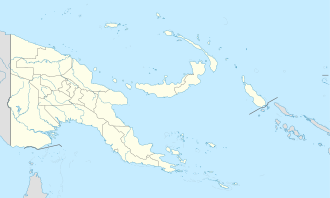Nickname: Abagagaheia Island | |
|---|---|
 Satellite image | |
| Geography | |
| Location | Oceania |
| Coordinates | 11°10′S152°55′E / 11.167°S 152.917°E [1] |
| Archipelago | Louisiade Archipelago |
| Adjacent to | Solomon Sea |
| Total islands | 1 |
| Major islands |
|
| Area | 3.66 km2 (1.41 sq mi) |
| Highest elevation | 182 m (597 ft) |
| Highest point | Mount Kuwanak |
| Administration | |
| Province | |
| District | Samarai-Murua District |
| LLG [2] | Louisiade Rural LLG |
| Island Group | Calvados Chain |
| Largest settlement | Abagagaheia (pop. 170) |
| Demographics | |
| Population | 170 (2014) |
| Pop. density | 46/km2 (119/sq mi) |
| Ethnic groups | Papauans, Austronesians, Melanesians. |
| Additional information | |
| Time zone | |
| ISO code | PG-MBA |
| Official website | web |
Kuwanak Island is an island in Papua New Guinea, part of the Calvados Chain within the Louisiade Archipelago. Its only settlement is called Abagagaheia, and it is located on the northwestern point. At low tide you can walk to Taifaur.
